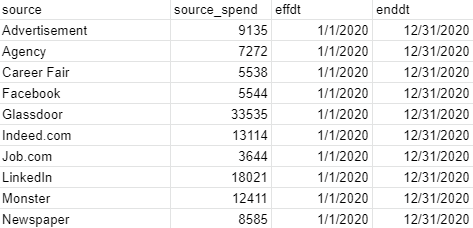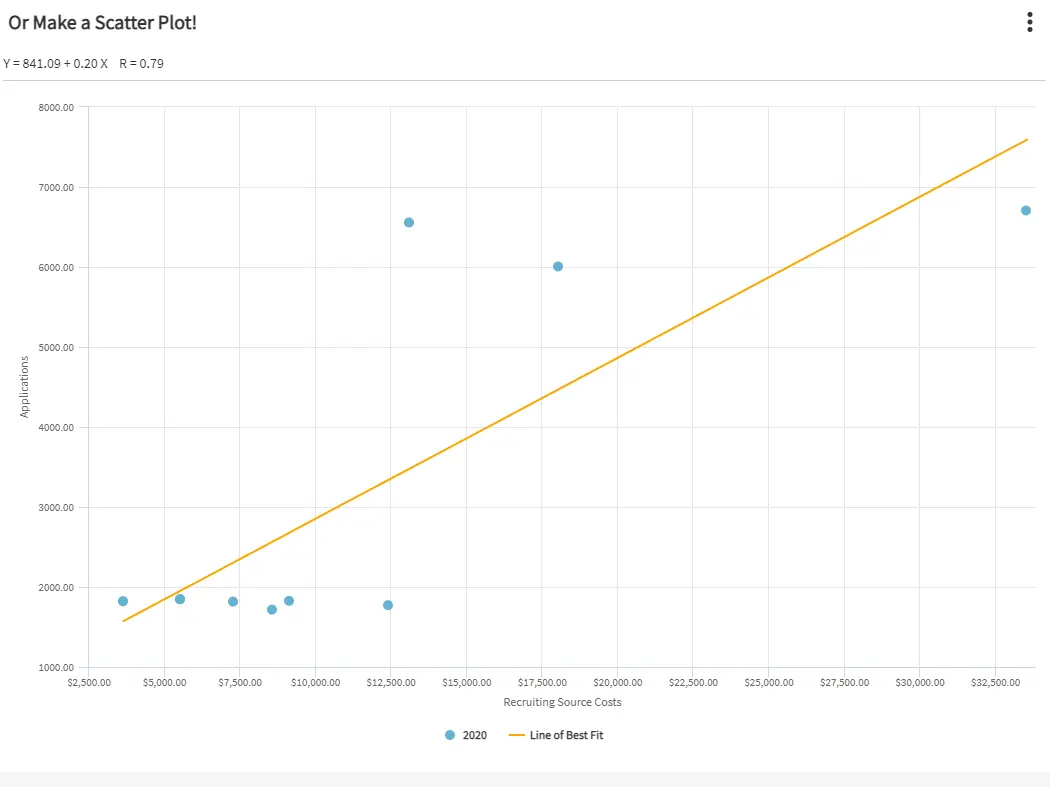It can be hard to select the right people analytics projects. There’s no shortage of options to choose from-- turnover risk, career path analysis, pay equity, impact of learning programs, etc. And, there’s also no shortage of hurdles to delivering an impactful analysis. But, there almost always is a shortage of organizational support for people analytics, so if you pick the wrong project, you run the risk of burning through the limited executive support you have.
With all that in mind, here are my 3 reasons to consider prioritizing an analysis of recruiting source costs.
Reason 1: The data requirements are relatively minimal and generally less sensitive
Applicant Sourcing cost analytics minimize two of the main challenges of people analytics: data security and data extraction. While the data is based on job applicant data, the data you need is not overly sensitive. You just need to know how many applications you received from a given source, in a given time frame, and what ultimately happened to those applications. Aside from data validation, you don’t need to dig into the personal details of the job applicants for this analysis. You really shouldn’t hit too many data management, compliance, or security snags with this one.
Once you’ve gotten ahold of your application data split by source, you need to gather up your job board pricing and other relevant source costs. While this data may not be tracked in your ATS, it shouldn’t be too hard to gather. You could literally start by grabbing a legal pad and jotting down the approximate annual spend by source. (Ok not a legal pad, but a very simple spreadsheet. We do not currently ingest data via legal pad.)
This would be a great time to do a retrospective analysis of 2020 recruiting if you haven’t done so already. On the source cost side, you would just need something like this:
That’s it. This could be the entire supplemental data set for 2020 like the example above. In a csv file that’s less than a kilobyte.
Once you have this, you can do several things like compare to the number of applicants or the number of hires you had to get to the average cost of recruiting a new employee.
Reason 2: Cost-per-hire metrics will come up time and time again.
This brings me to reason two of why you should prioritize source cost analytics: it’s an opportunity to build your team’s experience with cost allocation metrics. Being able to efficiently and accurately allocate source costs will serve you very well-- opening the door to progressively more complex and impactful cost of workforce calculations.
A couple of years ago, I built out a video that shows how this works in detail in One Model. It’s one of my favorite things about our calculation engine. You can check that out in the video below. The short answer though is that it hinges on being able to calculate recruiting cost per day, then dynamically managing days in period.

It’s certainly okay and valuable to just do some back-of-the-envelope calculations at first like “$10,000 spent last year and 5,000 applications received equals $2 per application (or per hire)”, but also very worth investing in the logic and systems that enable you to do this on the fly and drill down to the month, week, day, etc.
Recruiting source costs are a good gateway into cost allocation because, as noted above, the underlying data is pretty manageable. Once you can run this for source costs, then you can jump into salaries, benefit costs, etc.
Reason 3: It’s an actionable analysis that can save your organization money!
The third big reason to prioritize a recruiting source cost analysis is that it will probably pay for itself! Let's face it, recruiting employees is a time-consuming and costly process. It’s easy to help your recruiting team save money once you connect the dots between source spending and recruiting output. All you need to do is stack rank your sources by “cost per” and then reallocate your spend to the ones that perform the best. If your LinkedIn or Indeed rep calls you up and asks why you’re not spending more-- just show them the data. You might find they are willing to give you a better offer! I had front-row seats for an absolute master class in this back at Jobs2web. There I was working with Steve Shaffer, Linda Moller, and some of our early analytics customers (Here’s to you Annette and Brent!).
People analytics teams are often criticized for not having enough ROI or dollars and cents style analyzes. You can change that impression with a solid source cost ROI analysis and an early win on saving costs.
So there you have it- my argument for why a recruiting source cost analysis is a great “quick win” project for your people analytics program. If you’re curious about the details or underlying math, please reach out and schedule a time to chat. I do love this topic and am always up for a good conversation about recruiting data.
Let's Get Your Recruiting Cost Conversation Started


